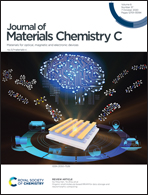Metamaterial and nanomaterial electromagnetic wave absorbers: structures, properties and applications
Abstract
Perfect absorbers (PAs) are devices that can realize the annihilation of incident electromagnetic waves (EMWs) by eliminating reflection and transmission. Such engineered devices possess ample potential for practical applications and have attracted tremendous attention because of their superb capability of harvesting EMW energy. Since the first demonstration of metamaterial PAs in 2008, great efforts have been made to develop high-performance PAs utilizing metamaterials and nanomaterials. Thanks to advanced nanofabrication technologies, the research on metamaterial/nanomaterial based EMW absorbers has remarkably expanded over the past decade. In this review, we concentrate on state-of-the-art advances, systematically review the development progress of structures and materials, and explore some novel strategies to develop lithography-free absorbers which are promising for large-scale preparation. Following the aspects mentioned above, the emerging applications of PAs, such as solar energy conversion, photoelectric devices, high-precision sensing and high-resolution structural color pixels, have been reviewed. Finally, the present challenges for practical implementation are outlined and the future outlook is also discussed.

- This article is part of the themed collection: Journal of Materials Chemistry C Recent Review Articles


 Please wait while we load your content...
Please wait while we load your content...